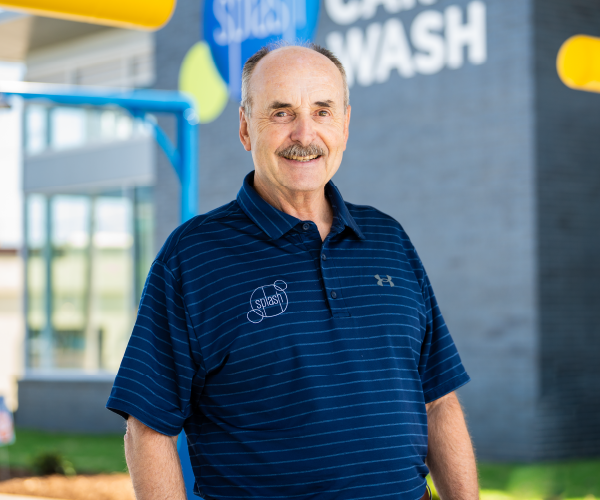
Smart Renovations
April 19, 2022
7 minute ReadBY TOM GRESHAM
Smart technology has revolutionized the car wash market. New digital and cloud-based tools are improving the customer experience and allowing car washes to operate more efficiently than ever before.
These amazing tools have changed the old idea of what a car wash is and what it can be, said Peter Sullivan, who manages business development at A Plus Design Group.
However, the formidable speed of the ongoing advancements in smart technology creates challenging considerations for car wash operators. Those building new facilities can implement smart tech tools in the design and construction phase, making for smart buildings from the outset. For those with existing facilities, though, the decisions can be more difficult. They want to keep up with the latest upgrades as best as they can, but it can be difficult to decide which advances are worth the investment and disruption that could be necessary to update their buildings.
“It’s a little easier to strategically make those decisions on what tech you’re going to invest in and what you’re not when you have a ground-up opportunity,” said Chad Roach, Managing Partner of Car Wash Buildings and CEO of Living Water Express Car Wash. “It’s tougher for existing operators.”
Part of what makes the decision complicated for operators weighing upgrades toward a smarter tech facility is the threat of being left behind as competitors adopt high-tech tools, leaving less tech-savvy operators at risk of looking out of touch and old fashioned.
“The car wash operators who are operating their business smartly right now realize that they’re not just a car wash company, they’re a data company that washes cars,” said Steve Turney, Business Development Manager for Modernwash. “There are all sorts of ways to collect data in smart ways, and apply that data, analyze that data and maximize it, not just operationally, but with marketing on the back end. It’s not just about the technology — it’s about changing the mindset.”
In general, Eric Hathaway, Chief of Design for Modernwash, said, most car washes keep aware of smart technology upgrades that can be beneficial to their businesses. Smart technology can make the customer experience easier and improve operations, such as through apps and touch-free payment technology, RFID readers and license plate readers that recognize customers upon arrival and help gear the wash to their preferences and vehicle specifications, digital signage that tailors messages to each customer, and sensors that adjust wash functions to vehicles and help prevent collisions, damages and employee safety risks. Sophisticated lighting and audio can build a festive atmosphere that enhances the wash experience itself for customers, while attracting potential customers driving past facilities. Operators can pull out their phones and view security camera footage from any of multiple sites in real time or use machine learning to identify when equipment parts likely will need replacement or maintenance. Or they can tap into some of the car wash systems and review for error messages or other issues. “The cloud environment is really letting people in in new ways,” Hathaway said.
Sullivan said technology decisions should reflect not only the technology itself but how it works into the environment of the car wash and reflects the wash’s unique goals and needs.
“There are so many different answers to ‘what makes a great car wash’ that there is no one size fits all,” Sullivan said.
PRIMARY CHALLENGES
Sullivan said the biggest challenge to making smart tech upgrades to an existing building is making it part of an overall plan and not simply a workaround that leaves you with technology awkwardly fitting into the environment. Roach said it is important for operators to recognize whether the investment of renovating to accommodate new technology is worth the cost. In some cases, he said, old facilities are better torn down and rebuilt rather than modified.
“You want to make sure that you aren’t throwing good money after bad — you want to be sure a more fundamental overhaul isn’t what’s needed,” Roach said. “I think that’s a tension for a lot of existing operators, wondering how much do I improve something? Am I truly making the customer experience better? Because if you try to stay at the bleeding edge of technology all the time, you could be tearing down everything you’ve done and redoing it every two years. And we all know that doesn’t work. So I think that’s a cost benefit there for operators to try to think through.”
Hathaway said there can be technical challenges to implementing smart tech into an existing structure, depending on the technology and the building.
“It really comes down to the structure itself, how it was built,” Hathaway said. “What kind of access to different areas of the structure you have is going to influence how difficult it is.”
In general, though, Hathaway said the technical aspects of installing new smart technology often is not the most difficult piece of the equation. Ultimately, the budget can be the toughest hill to climb.
He said operators face questions of “How much is it going to be to take this out? How much time is it going to take me to pull out what’s in here and replace it with something new?”
As part of the cost consideration, Hathaway said operators must weigh whether they want to try to stay in operation while upgrades occur or instead shut down in the meantime. Sometimes, trying to stay open can cause more problems than shutting down, Hathaway said, though closing comes with sacrificing revenue.
“It’s a whole lot easier to put it in the first time and not have to replace it than it is to come back later and do it,” Hathaway said.
DECIDING WHEN, WHETHER AND HOW TO INVEST IN SMART TECH
Sullivan said the value of smart tech tools can vary depending on the situation and the market, making some tools simply extraneous.
“Be aware of feature dumping on the wrong client and making the experience too extra when it is not needed,” Sullivan said.
The lure of smart technology and the various ways it promises to improve a car wash can lead operators astray into complexity and cost that are unnecessary, worsening the experience for at least some customers. In addition, some customers will be uneasy with sharing their data, and operators must be careful about being too aggressive with new smart tech tools and turning some customers off. “There’s an argument for not letting the pendulum swing too far,” Turney said. Balance is crucial.
“You can get too smart,” Turney said. “We see some organizations trying to remove the employee completely, trying to make it a hundred percent ‘smart facility.’ But sometimes you have to design not for the smartest consumer, but for ‘the least smart’ consumer, who’s also going to be driving through your car wash and may not see the signs and signals that you’re trying to automate in order to load them into the tunnel, for example. That won’t be a happy experience for them. So, you have to design for everyone.”
Roach recommends prioritizing how a technology upgrade is going to affect the customer experience when considering if an investment is worth it.
“Operators can look at a technology that maybe saves a little bit on their chemical or conserves some water, and they can run an ROI on that and that’s just a little easier to control and to measure,” Roach said. “Therefore, operators feel more comfortable spending on that technology. … They can rationalize that in their mind because they can understand it.”
More important but harder to measure, Roach said, are investments that improve customer value.
“It’s intangible, and it’s a little more art than science,” Roach said. “You can’t just put it on a spreadsheet, but an investment to make your sites easier and more desirable for customers to come through and to reduce customer friction — like their disappointment when they come to a site and they have to wait because a member’s stuck in the members-only lane because they’re not getting a good read on their RFID sticker or something like that. How can you quantify what that does?”
Roach said, “Nine times out of 10, the customer is going to go for the car wash that’s easier for them to use, even if it’s a buck more.”
“It’s hard for operators to quantify that if you put $100,000 into redoing your conveyor system, or $50,000 into upgrading their loading system, or you move to license plate recognition from an RFID system for member recognition, it’s kind of hard to see an immediate ROI on that and run the math,” Roach said. “What’ll happen, though, is you become just generally easier and better for people to use and that’s going to really count.”








